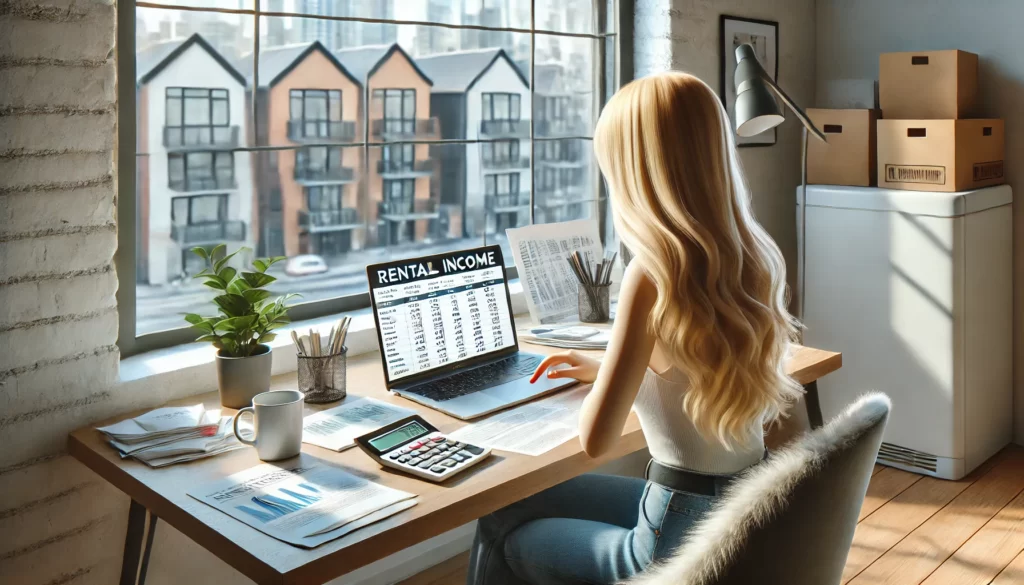How to Calculate the Rentability of a Rental Property: A Comprehensive Guide
January 5, 2025
Investing in rental properties is one of the most popular ways to build wealth. Whether you’re a seasoned investor or just starting, understanding how to calculate the rentability of a rental property is crucial. Rentability, in simple terms, refers to the potential profitability of a rental property. By evaluating its rentability, you can assess whether the property is a good investment or not. This guide will walk you through the steps to calculate the rentability of a rental property, using a variety of financial metrics and tools to ensure your investment decisions are data-driven and informed.
How to Calculate the Rentability of a Rental Property: A Comprehensive Guide
ToggleWhat is Rentability?
Rentability refers to how much income a property generates in comparison to its costs and value. Essentially, it’s a way of measuring how well the property is performing as an investment. For a rental property to be considered “rentable,” it should provide a return on investment (ROI) that justifies the costs associated with owning and managing it. The rentability of a property is often influenced by factors such as location, property condition, rental demand, and local rental market trends.
Step 1: Calculate the Gross Rental Income
The first step in evaluating a property’s rentability is to estimate the gross rental income. This is the total income you can expect from renting the property before any expenses are deducted. To calculate gross rental income, follow these steps:
Determine the Rent per Month: This is the amount you can charge tenants per month. Research local market rates for similar properties in the area to set a competitive price.
Multiply by the Number of Months: Typically, rental properties are leased on a yearly basis. Multiply the monthly rent by 12 months to calculate the annual gross rental income.
For example:
- Rent per Month: $1,200
- Annual Gross Rental Income = $1,200 × 12 = $14,400
Step 2: Calculate Operating Expenses
Next, it’s important to calculate the operating expenses of your rental property. These are the ongoing costs associated with maintaining and managing the property. Some common expenses include:
- Property Taxes: These vary depending on the location and the value of the property.
- Insurance: The cost of insuring the property against damage, theft, or liability.
- Property Management Fees: If you hire a property management company, they typically charge around 8-12% of the monthly rent.
- Maintenance and Repairs: This includes routine maintenance like landscaping, plumbing, or HVAC repairs.
- Utilities: If you pay for utilities such as water, gas, or electricity, these should be factored in.
- Mortgage Payments: If you have a loan for the property, mortgage payments are a significant cost.
Add up all these expenses to determine your total operating costs. For example:
- Property Taxes: $2,500
- Insurance: $1,000
- Property Management Fees (10% of $14,400): $1,440
- Maintenance and Repairs: $1,200
- Utilities: $600
- Mortgage Payments: $6,000
Total Operating Expenses = $2,500 + $1,000 + $1,440 + $1,200 + $600 + $6,000 = $12,740
Step 3: Calculate the Net Operating Income (NOI)
The next step is to calculate the Net Operating Income (NOI). This is the income you earn from the property after accounting for operating expenses but before taxes and financing costs (such as mortgage payments). To calculate NOI:
NOI = Gross Rental Income – Operating Expenses
Using the figures from the previous sections:
- Gross Rental Income = $14,400
- Operating Expenses = $12,740
NOI = $14,400 – $12,740 = $1,660
The NOI of this rental property is $1,660, which represents the property’s earnings after covering operating expenses.
Step 4: Calculate the Cash Flow
After determining the NOI, you can now calculate the cash flow. This is the amount of money left over after paying your mortgage payments. To calculate cash flow:
Cash Flow = NOI – Mortgage Payments
For example:
- NOI = $1,660
- Mortgage Payments = $6,000
Cash Flow = $1,660 – $6,000 = -$4,340
In this case, the property is generating negative cash flow, meaning you are losing money every month after covering mortgage payments. This can be a red flag for investors.
Step 5: Calculate the Return on Investment (ROI)
Another essential metric for evaluating the rentability of a rental property is the Return on Investment (ROI). This metric measures the profitability of the investment relative to the amount of money you have invested in the property.
The formula for calculating ROI is:
ROI = (Net Profit / Total Investment) × 100
To calculate net profit, subtract all costs and expenses from your gross rental income.
For example, if you invested $100,000 in purchasing the property and your net profit after expenses and mortgage payments is $1,660, the ROI calculation would look like this:
ROI = ($1,660 / $100,000) × 100 = 1.66%
An ROI of 1.66% means you’re earning a return of 1.66% on your investment, which might be considered low for many investors.
Step 6: Calculate the Capitalization Rate (Cap Rate)
The Capitalization Rate (Cap Rate) is another crucial metric used by real estate investors to assess the rentability of a property. The Cap Rate measures the return on an investment based on its income potential. It’s calculated by dividing the NOI by the property’s market value (or purchase price) and multiplying by 100 to get a percentage.
The formula for Cap Rate is:
Cap Rate = (NOI / Property Value) × 100
For example, if the market value of the property is $150,000 and the NOI is $1,660, the Cap Rate would be:
Cap Rate = ($1,660 / $150,000) × 100 = 1.11%
A Cap Rate of 1.11% indicates a relatively low return for an investment, which may suggest the property is less profitable.
Conclusion: Interpreting Your Results
Now that you’ve calculated key metrics such as Gross Rental Income, Operating Expenses, NOI, Cash Flow, ROI, and Cap Rate, you can begin to assess the rentability of your rental property. Positive cash flow, a healthy ROI, and a competitive Cap Rate generally indicate a good investment.
However, keep in mind that these calculations are not the only factors to consider when evaluating rentability. Local market conditions, the property’s location, its condition, and potential for future appreciation all play important roles in determining whether a property is a sound investment.
By regularly calculating these metrics and adjusting your strategies accordingly, you can maximize the rentability and profitability of your rental property, helping you make informed decisions that lead to long-term financial success.









